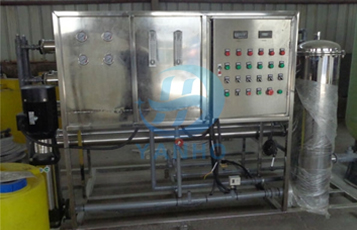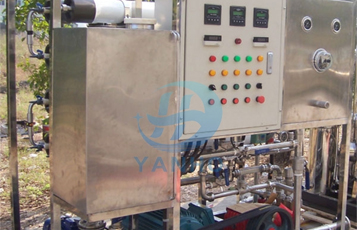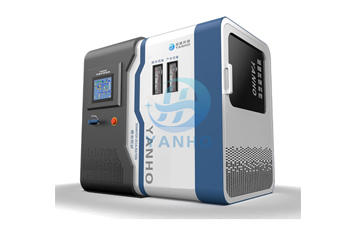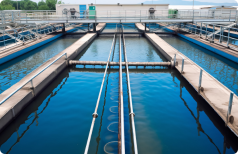A little trick to remove impurities from desalination equipment
 Release Date:2023-10-13
Release Date:2023-10-13
 Reading volume:
Reading volume:
A little trick to remove impurities from desalination equipment. At present, there is a shortage of water resources in our society. In order to deal with this problem, many countries have spent a lot of energy and time. At present, the best treatment solution is to desalinate seawater and then produce desalination equipment. So, how to deal with impurities in desalination equipment?
Whether it is seawater desalination or brine desalination, water supply pretreatment is the key to ensure the long-term stable operation of reverse osmosis system. The large number of microorganisms, bacteria and algae in seawater should be taken into account when preparing a seawater pretreatment scheme. The proliferation of bacteria and algae and the growth of microorganisms in seawater not only bring a lot of trouble to water intake facilities, but also directly affect the normal operation of desalination equipment and process pipelines. The periodic ebb and flow of tides, the large amount of mud in seawater and the great change of turbidity can easily cause the unstable operation of seawater pretreatment system. Seawater is corrosive. The equipment, valves, pipes and other materials used in the system should be selected to a certain extent to ensure good corrosion resistance.
1. Kill bacteria and algae
In foreign desalination equipment, chemical reagents such as liquid chlorine, sodium chloride and copper sulfate are mainly used to kill algae. Given traffic and other factors, it's difficult to add chemicals to kill algae. During the development of the equipment, a sodium hypochlorite generator for seawater desalination was specially used. After seawater enters the pump, a small amount of pressurized seawater is separated into a sodium hypochlorite generator, and sodium chloride is produced under the effect of a direct current electric field. Sodium chloride is injected directly into the beach caisson through the azimuth difference to kill bacteria, algae and microorganisms in the seawater.
2. Seawater electrolysis
Due to the high hardness of seawater, it is necessary to overcome the problem of electrode fouling in direct electrolysis of seawater. Using the EDR technique as a reference, the electrode polarity changes every 5-10 minutes, effectively dealing with the problem of scaling and deposition in the sodium hypochlorite generator.
The above is condensation filtration, which is intended to remove colloids and suspended impurities from seawater and reduce turbidity. Desalination equipment to deal with impurities, hope to help you.
Related News
-

A little trick to remove impurities from desalination equipment
View details


-

Seawater desalination equipment damage to the answer to this phenomenon
View details


-

Today, let's explain some of the functional advantages of Marine desalination equipment
View details


-

What material of desalination equipment can be expected in the future?
View details


CONTACT US

Official Account


Mobile Browsing






 Hotline:
Hotline: Address:No.76 Longfei Road, Chengyang District,Qingdao, Shandong Province, China
Address:No.76 Longfei Road, Chengyang District,Qingdao, Shandong Province, China E-mail:y15092162376@163.com
E-mail:y15092162376@163.com